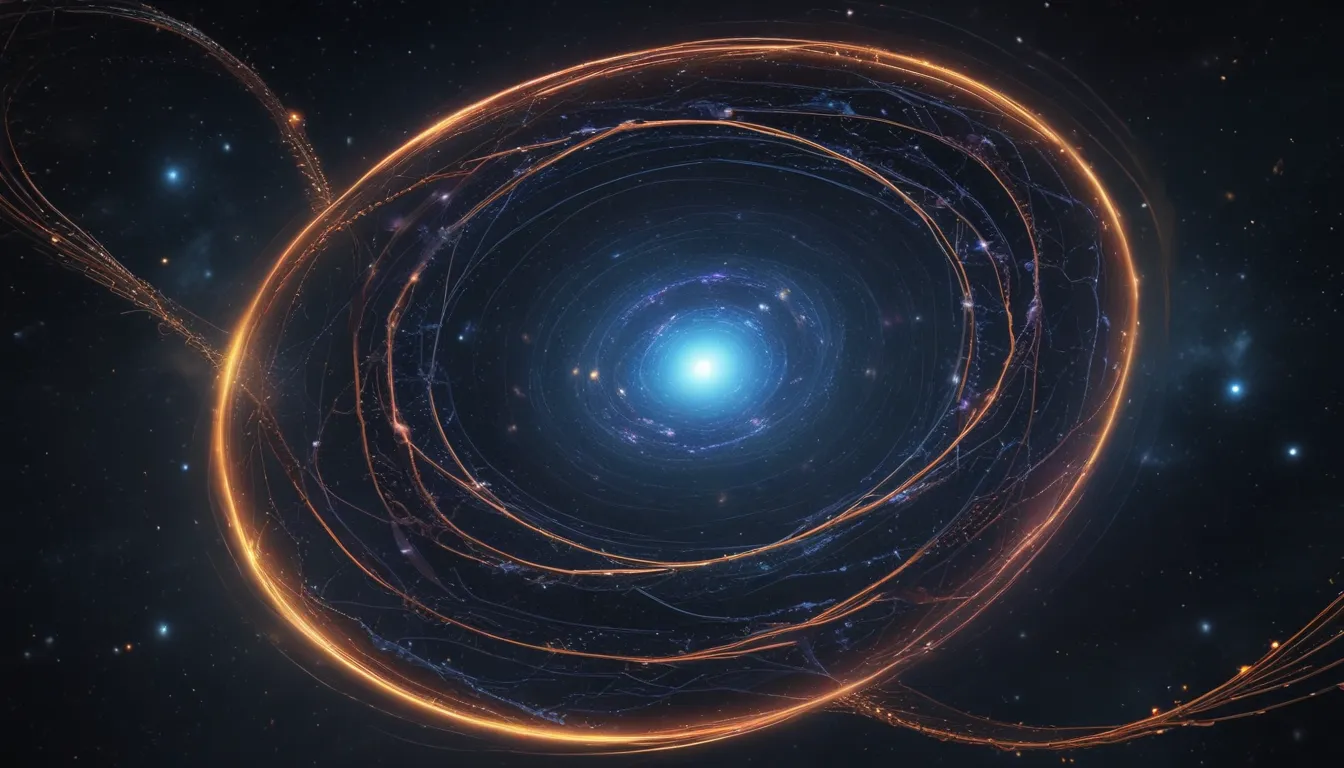The pictures we use in our articles might not show exactly what the words say. We choose these pictures to make you interested in reading more. The pictures work together with the words but don’t take their place. The words still tell you the important facts.
The universe is a vast expanse filled with enigmatic structures that continue to intrigue and captivate astronomers around the world. Among these fascinating phenomena are galactic filaments, long thread-like structures that stretch across millions of light-years, connecting galaxies in the vastness of space. In this article, we will embark on a journey through the cosmic fabric and explore 16 intriguing facts about galactic filaments. From their formation and composition to their role in shaping the universe, these cosmic highways offer a unique window into the mysterious workings of the cosmos.
So sit back, buckle up, and prepare to delve into the depths of the universe as we uncover the secrets of galactic filaments and their significance in the grand tapestry of the cosmos.
Unveiling the Mystery of Galactic Filaments
Galactic filaments, also known as cosmic threads, are intricate structures composed of gas, dust, and dark matter that span across millions of light-years in the universe. These filaments act as interstellar bridges, connecting galaxies and facilitating the flow of matter and energy between them. With a vast length that can extend for hundreds of millions of light-years, galactic filaments are the largest known structures in the universe, forming a web-like structure known as the cosmic web that cradles countless galaxies within its strands.
The Building Blocks of the Universe
One of the most intriguing aspects of galactic filaments is their composition, which is predominantly made up of dark matter, an elusive substance that exerts a gravitational force on visible matter. These filaments serve as birthplaces for new galaxies, providing a rich environment of gas and dust where accretion processes lead to the formation of cosmic structures. By channeling matter to the central regions of galaxy clusters, galactic filaments play a vital role in uniting cosmic structures and serving as intergalactic migration routes for galaxies to traverse through the vast cosmic expanse.
Peering into the Cosmos: Studying Galactic Filaments
Astronomers employ various cutting-edge techniques such as gravitational lensing and spectroscopy to study the properties and composition of galactic filaments. These methods enable scientists to unravel the mysteries of these cosmic highways and understand their role in the evolution of the universe. The distribution of matter within galactic filaments is not uniform, with denser regions known as nodes serving as hubs for galaxy formations. Through meticulous observation and analysis, researchers can trace the timeline of filament formation, dating back to the early moments of the universe following the Big Bang.
Illuminating the Dark Energy Enigma
Studying the behavior and evolution of galactic filaments provides valuable insights into the nature of dark energy and its influence on the expansion of the universe. By unraveling the intricate connections between filaments and cosmic structures, scientists can gain a deeper understanding of the cosmic web and its role in shaping the universe. Our Milky Way galaxy resides within a galactic filament known as the Local Supercluster filament, offering a unique vantage point to study the structures and dynamics of the cosmos.
The Future of Cosmic Exploration
As technology advances and observational capabilities improve, scientists are poised to gain a deeper understanding of galactic filaments and their role in the cosmic tapestry. Further studies will shed light on the formation, evolution, and significance of these cosmic highways, opening new avenues for exploration and discovery in the field of astrophysics. Each fact uncovered about galactic filaments adds another piece to the cosmic puzzle, bringing us closer to unraveling the mysteries of the universe and our place within it.
FAQs: Exploring the Galactic Filaments
- What are galactic filaments? Galactic filaments are long, narrow threads of gas, dust, and dark matter that connect galaxies in the universe, forming part of the cosmic web.
- How are galactic filaments formed? These filaments are formed through a process of gravitational attraction, where matter accumulates along dense regions in the cosmic web.
- Why are galactic filaments significant? Galactic filaments play a crucial role in the formation and evolution of galaxies by providing channels for gas inflow and triggering star formation.
- Can we observe galactic filaments? While not directly visible, scientists infer the presence of galactic filaments through techniques such as gravitational lensing and mapping cosmic microwave background radiation.
- Are galactic filaments unique to our universe? Galactic filaments are thought to be common features in the universe, connecting galaxies and cosmic structures across vast cosmic distances.
- Do galactic filaments contain dark matter? Yes, galactic filaments are believed to contain a significant amount of dark matter, influencing the formation of cosmic structures.
- What lies ahead in the study of galactic filaments? With ongoing advancements in observational tools and simulations, scientists are poised to deepen their understanding of galactic filaments and their role in the universe's structure and dynamics.
As we journey through the cosmic web, each discovery about galactic filaments unveils a new layer of the universe's intricacies, offering insights into its evolution and complexity. By unraveling the mysteries of these cosmic highways, we inch closer to understanding the vast expanse of space and our place within it. Join us on this cosmic adventure as we explore the wonders of galactic filaments and unlock the secrets of the universe's cosmic tapestry.






